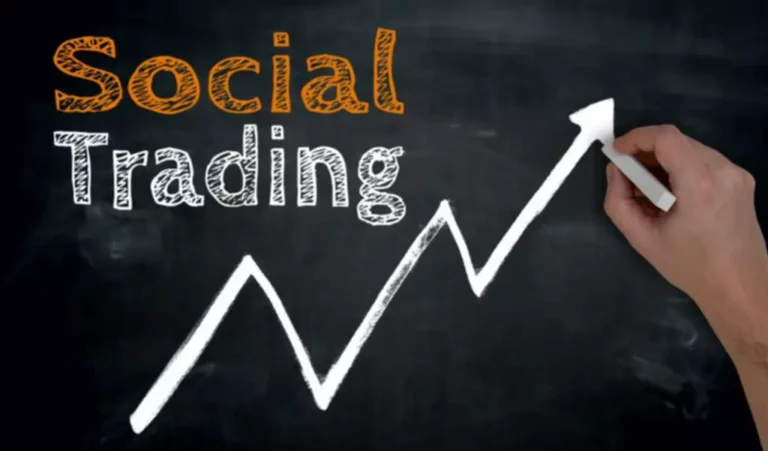Falling Wedge: A Bullish Pattern Explained
Traders ought to know the differences between the rising and falling wedge patterns in order to identify and trade them effectively. The rising wedge chart pattern can fit in the continuation or reversal category. When it’s a continuation pattern it will trend up, however the slope in the wedge will be against the overall market downtrend. When trading this pattern it is important to have confirmation of the breakout so it does not get the trader caught in a trap. These patterns are formed by support and resistance and price will move back to retest those levels to see if they hold. In a rising wedge, both boundary lines slant up from left to right.
The Falling Wedge pattern itself can form over a three to six-month period. As you might have expected, the rising wedge is very similar to the falling wedge. It’s simply the inverse version of the latter, both in meaning and apperance. This isn’t the case with a wedge, where both lines should be falling or rising, depending on if it’s a falling or rising wedge.
How can I accurately trade a Falling Wedge pattern?
Falling and rising wedges are a small part of intermediate or major trend. As they are reserved for minor trends, they are not considered to be major patterns. Once that basic or primary trend resumes itself, the wedge pattern loses its effectiveness as a technical indicator.
Not all wedges will end in a breakout – so you’ll want to confirm the move before opening your position. To design your wedge trading strategy, you’ll need to decide when to open your position, when to take profit and when to cut your losses. You should consider whether you understand how CFDs work, and whether you can afford to take the high risk of losing your money. This, once again, is why it’s really important that you always make sure to backtest the patters you’re going to trade, before putting real money on the line. It all depends on the timeframe and market you trade, and how it resonates with the pattern.
Following the consolidation of the energy within the channel, the buyers are able to shift the balance to their advantage and launch the price action higher. The trend lines converging the support and resistance level in a wedge pattern slope in the same direction, however, they may differ in magnitude. Trend lines are used not only to form the patterns, but also become support and resistance.
Alternatively, you can use the general rule that support turns into resistance in a breakout, meaning the market may bounce off previous support levels on its way down. As a result, you can wait for a breakout to begin, then wait for it to return and bounce off the previous support area in the ascending wedge. This will enable you to ensure that the move is confirmed before opening your position. Traders can make use of falling wedge technical analysis to spot reversals in the market. The USD/CHF chart below presents such a case, with the market continuing its downward trajectory by making new lows.
For instance, if the market performs a lot of bullish gaps, we can be a little more certain that bulls are in control, and that the chances of seeing an upward-facing breakout is bigger. Instead of going long as the market breaks out to the upside, they wait for the market to revisit the breakout level, ensure that it holds, and then decide to enter the trade. This way you reduce the risk of falling victim for as many false breakouts, as you first check if the market really respects the breakout level. Now, as prices continue into the shape that is going to become the falling wedge, we also see how volatility levels become lower and lower. Coming from a bearish trend, most market participants have bearish outlooks, and expect the market to continue falling. This also holds true at first, when the market forms the first highs and lows of the pattern.
Wedge pattern
You can see that in this case the price action pulled back and closed at the wedge’s resistance, before eventually continuing higher on the next day. We have a basic stock trading course, swing trading course, 2 day trading courses, 2 options courses, 2 candlesticks courses, and broker courses to help https://www.xcritical.in/ you get started. We also offer real-time stock alerts for those that want to follow our options trades. You have the option to trade stocks instead of going the options trading route if you wish. Another common signal of a wedge that’s close to breakout is falling volume as the market consolidates.
- This isn’t the case with a wedge, where both lines should be falling or rising, depending on if it’s a falling or rising wedge.
- An ascending formation occurs when the slope of both the highs and lows rises, while a descending wedge pattern has both slopes sliding.
- The rising wedge chart pattern can fit in the continuation or reversal category.
- Harness the market intelligence you need to build your trading strategies.
- When trading this pattern it is important to have confirmation of the breakout so it does not get the trader caught in a trap.
The falling wedge pattern (also known as the descending wedge) is a useful pattern that signals future bullish momentum. This article provides a technical approach to trading the falling wedge, using forex and gold examples, and highlights key points to keep in mind when trading this pattern. It involves recognizing lower highs and lower lows while a security is in a downtrend. The aim is to identify a slowdown in the rate at which prices drop, suggesting a potential shift in trend direction. It’s also critical to wait for prices to break through the upper resistance line of the pattern and to validate this bullish signal with other technical analysis tools before deciding to buy.
What Is a Wedge and What Are Falling and Rising Wedge Patterns?
The Falling Wedge should be traded as a bullish pattern by buying the breakout to the upside as the previous uptrend resumes signaled by a break of price above the upper trend line resistance. The bullish confirmation of a Falling Wedge pattern is realized when the resistance line is convincingly broken, often accompanied by increased trading volume. It’s usually prudent to wait for a break above the previous reaction high for further confirmation. Following a resistance break, a correction to test the newfound support level can sometimes occur.
It indicates that the buyers are absorbing the selling pressure, which is reflected in the narrower price range, and finally results in an upside breakout. Traders typically place their stop-loss orders just below the lower boundary of the wedge. Also, the stop-loss level can be based on technical or psychological support levels, such as previous swing lows or significant technical levels. In addition, the stop-loss level should be set according to the trader’s risk tolerance and overall trading strategy.
A falling wedge as a bullish continuation pattern within an uptrend can be observed when the price of a security is trending upward and forming a falling wedge pattern. In this scenario, the falling wedge pattern suggests that the downtrend is likely to end, and the bulls are starting to take control of the market. This move indicates that the bears have lost control, and the bulls have taken over, pushing the price upward and reversing the downtrend. The falling wedge is a bullish price pattern that forms in a positive trend, marking a short pause that’s expected to result in a breakout to the upside. Still, some traders choose to regard the pattern as a bearish sign. The falling wedge pattern occurs when the asset’s price is moving in an overall bullish trend before the price action corrects lower.
As you might have guessed, a false breakout is when the market breaks out past a breakout level, but then reverses and goes in the opposite direction of the initial breakout. It prominently signals the end of the correction or consolidation phase. The buyers exploit the consolidation of prices to reform the new buying opportunities so that the traders can defeat the bears and push the prices higher. It’s important to treat day trading stocks, options, futures, and swing trading like you would with getting a professional degree, a new trade, or starting any new career. Say EUR/USD breaks below the support line on its wedge, but then rallies and hits a new higher high. Both lines have now been surpassed, meaning that the pattern has broken.
When this pattern is found in an uptrend, it is considered a reversal pattern, as the contraction of the range indicates that the uptrend is losing strength. The falling wedge pattern is a continuation pattern formed when price bounces between two downward sloping, converging trendlines. It is considered a bullish chart formation but can indicate both reversal and continuation patterns – depending on where it appears in the trend. The Falling Wedge is a bullish pattern that suggests potential upward price movement. This pattern, while sloping downward, signals a likely trend reversal or continuation, marking a potential inflection point in trading strategies. Falling wedges can develop over several months, culminating in a bullish breakout when prices convincingly exceed the upper resistance line, ideally with a strong increase in trading volume.
Falling and rising wedge patterns summed up
When lower highs and lower lows form, as in a falling wedge, the security is trending lower. The falling wedge indicates a decrease in downside momentum and alerts investors and traders to a potential trend reversal. Even though selling pressure may diminish, demand wins out only when resistance is broken. As with most patterns, it’s important to wait for a breakout and combine other aspects of technical analysis to confirm signals. A chart pattern formed by converging two trend lines is called a wedge pattern.
Trading the falling or down wedge pattern involves waiting for the price to break above the upper line, typically considered a bullish reversal. The pattern’s conformity increases when it is what is a falling wedge pattern combined with other technical indicators, such as volumes. If you notice an increase in volume when the price breaks the upper resistance, then it indicates that buyers are taking charge.






